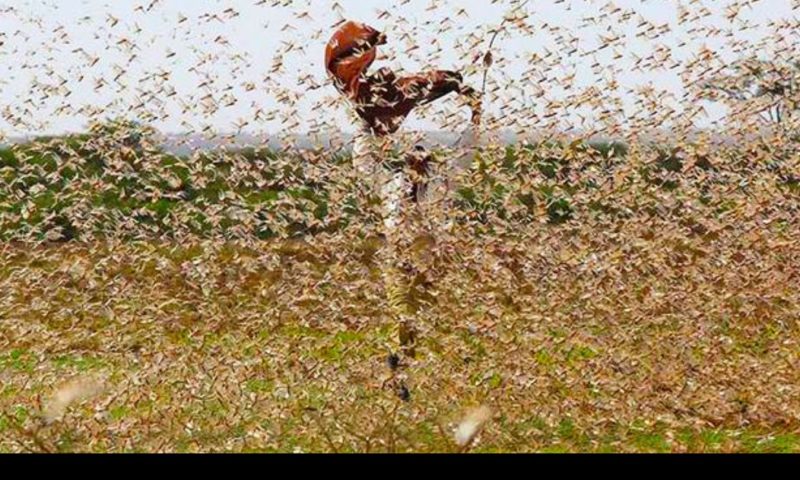By Frank Kamuntu
The United Nations has released US$10m from its Central Emergency Response Fund (CERF) to intensify the response to the desert locust swarms devastating parts of East Africa, leaving countries like Kenya and Uganda in a scary moment.
The money will go to the UN’s Food and Agriculture Organisation (FAO) to fund increased pesticide aerial spraying operations, the only effective means to reduce the swarm numbers, according to the organisation.
The insects, prevalent in Kenya, Ethiopia and Somalia, have devastated supplies in communities already battling food-security because of drought.

“This devastating locust outbreak is starting to destroy vegetation across East Africa with alarming speed and ferocity. Vulnerable families that were already dealing with food shortages now face the prospect of watching as their crops are destroyed before their eyes,” said UN humanitarian chief Mark Lowcock.
This has become a situation of international dimensions that threatens the food security of the entire subregion,” said UN Food and Agriculture Organisation Director-General Qu Dongyu, whose agency is convening the 30 January meeting in Rome.
“Authorities in the region have already jump-started control activities, but in view of the scale and urgency of the threat, additional financial backing from the international donor community is needed so they can access the tools and resources required to get the job done,” he said.
Unusually heavy rains late last year favoured breeding, triggering a locust outbreak that is the worst Ethiopia and Somalia have faced in 25 years – and the most extreme Kenya has experienced for 70 years.
Swarms – capable of travelling 150 kilometres a day – are heading through Kenya and may spread into South Sudan and Uganda. Even Rwanda in central Africa is beginning to take precautions.
“Swarms are increasing in numbers and density as we speak – they could increase 500 times in numbers by June,” Daniele Donati, co-chair of FAO’s desert locust task force said.
As locusts mature into their so-called “gregarious” phase, they become voracious eaters, stripping whatever vegetation they find, and able to consume their body weight in a day. A single small swarm can contain 150 million insects.
One super-swarm in northeast Kenya was estimated at 2,400 square kilometres, with the potential capacity to eat in a day the same quantity of vegetation that could feed as many as 84 million people.
“We must act now,” UN humanitarian chief Mark Lowcock said in a statement on Wednesday, announcing the release of $10 million from the UN’s Central Emergency Response Fund to support the FAO.
The swarms were exacerbating the impacts of climate change already being felt in the region, he added.
Locusts can devastate crops and pastures. Ethiopia, Kenya and Somalia are dealing with desert locust swarms of “unprecedented size and destructive potential” that could spill over into more countries in East Africa, the United Nations Food and Agriculture Organization (FAO) warned.
In Ethiopia, where floods have already affected the harvest, the insects had destroyed hundreds of square kilometers of vegetation in the Amhara and Tigray regions.
The FAO said the infestation was the worst of its kind in 25 years for Ethiopia and Somalia, and the worst Kenya had experienced in 70 years.




